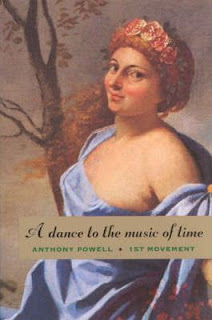by Rich Horton
Fritz Reuter Leiber, Jr., was born on Christmas Eve, 1910. His father was a noted Shakespearean actor who also had a significant film career, with some major roles in the silents (such as Caesar opposite Theda Bara in Cleopatra), and a long series of character roles in talkies such as The Sea Hawk. Fritz Jr. toured with his father's stage company, and appeared in small roles in a few films with his father in the 1930s, but his true métier was writing science fiction and fantasy. He had a degree in Physiology from the University of Chicago, and studied for the Episcopal ministry. He began publishing fiction in the mid-30s (he was one of H. P. Lovecraft's many correspondents), and began to make a real mark with work for John W. Campbell, Jr.'s Astounding in the early '40s. He worked briefly at Douglas Aircraft during the War (joining the likes of Philip José Farmer and Jack Skillingstead (and probably many others) as SF writers who worked (in a sense) for my company, Boeing), then spent a decade or so as an Associate Editor at Science Digest. He and his first wife Jonquil had one son, Justin, a philosopher and sometime SF writer. Leiber won two Hugos for Best novel: The Big Time (1958) and The Wanderer (1964), though my favorites among his novels are The Sinful Ones (1953/1980) and A Specter is Haunting Texas (1968). He also won four Hugos for short fiction (plus a special Hugo), two Nebulas, several World Fantasy Awards, and was named an SFWA Grand Master in 1980. He died in 1982.
 |
| (Covers by Jack Gaugan and John Schoenherr) |
As I recall James Nicoll's description of The Green Millennium in his "Novels of Fritz Leiber" post on rec.arts.sf.written went something like "Man finds green cat, hijinks ensue". I also recall someone mentioning that they had had trouble from their parents for reading an edition of the book, because of a racy cover. In fact, in the book Leiber makes rather a lot of the notion that female fashions at the turn of the millennium emphasize bare breasts. (Leiber often displayed a just vaguely (or sometimes not vaguely at all) kinky view of sex.) Indeed, this edition features a bare torsoed woman painted from 3/4 to the rear. That said, the book is not really very racy in content. (Less so than The Sinful Ones, also from 1953).
It's set in a large US city at the turn of the 21st Century. The US and Russia remain engaged in a warmish conflict -- the Korean War is in its 50th year, and there is a brief reference to a World War III, and the Capitol being in a second Washington. Phil Gish is a young man, shy of women, who has just lost another job to a robot. He wakes up and finds a green cat in his room, and is overcome with feelings of good will and optimism. He goes gadding about town, and the green cat slips away at a male/female wrestling establishment, run by the moblike organization Fun Incorporated.
Depressed again, Phil goes back to his room and spies on the pretty girl across the way, but as she undresses he notices that her legs are furred and hoofed. He decides that between green cats and satyrs he really is nuts, and visits a psychiatrist. But the psychiatrist seems unduly interested in the green cat, and locks Phil in. Luckily, his wild (and bare-breasted) daughter takes pity on Phil and lets him out, and we are off on a pretty much non-stop chase/romp featuring wrestlers, mobsters, a benevolent scientist apparently modelled on Robert Oppenheimer, Russian spies, a witch, a weirdo who is into all sorts of New Ageish religions including, inevitably, worship of Bast in the form of the green cat, the Federal Bureau of Loyalty, aliens with names based on Aphrodite and Dionysus, and so on.
It's not one of my favorite Leiber novels. It seems more frenetic than logical, and one way or another I couldn't quite believe in most of the characters -- they seem generally types, not real. The resolution is a bit trite. Leiber is never quite bad, but this is pretty minor stuff for him.
The flip side is a collection of four stories. Perhaps conveniently, they are pretty much ordered both by decreasing order of length, and decreasing order of quality. Here they are:
"The Black Gondolier" (12,000 words, from the 1964 August Derleth Arkham House anthology Over the Edge) -- set in Venice, CA, with much made of parallels with the real Venice. A man becomes convinced that the oil under the earth is an intelligence, and that it is after him.
"Midnight in the Mirror World" (6200 words, from Fantastic, October 1964) -- a 50-ish divorced recluse who notices a scary woman in one (but only one) of the multiple reflections of himself in two mirrors across from each other -- and each night the woman is in a nearer reflection.
"I'm Looking for 'Jeff'" (5100 words, from Fantastic, Fall 1952) -- a strange woman who only certain people can see shows up every night in a bar, looking for someone named Jeff.
"The Casket Demon" (4300 words, from Fantastic, April 1963) -- a rather silly story about a German-American actress, the last of the Von Sheers, who needs publicity to keep her safe from an ancient curse.
There was a British version of Night Monsters, a full length collection which sensibly deleted "The Casket Demon", and added "The Creature from Cleveland Depths", "The Oldest Soldier", "The Girl with the Hungry Eyes", and "A Bit of the Dark World" (this last a relatively little-known story that I think is worth more attention than it has gotten.)








